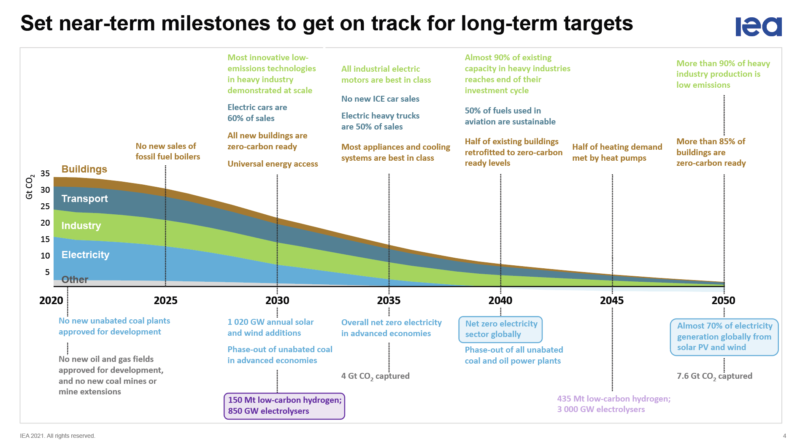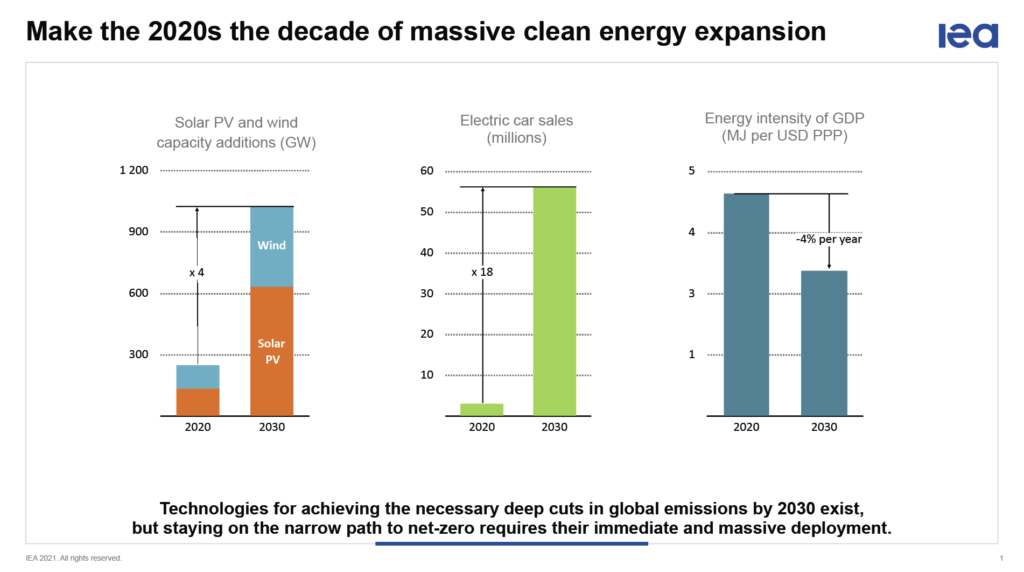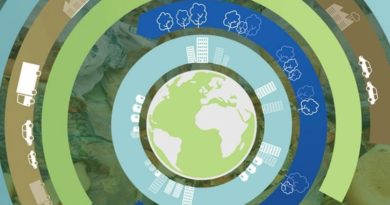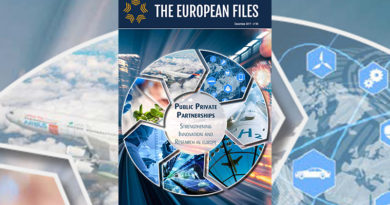
The Outlook for the Global Clean Energy Transition
If goodwill and rhetoric were all that counted, we would already be well on our way to reaching net zero emissions by mid-century. Over 120 countries, including many of the world’s major economies, have stated intentions to reach this goal. And the COP26 Climate Change Conference in Glasgow provides an excellent opportunity for nations to confirm their existing engagements and commit to even more ambitious targets.
This is all encouraging – but the pledges need to be backed up by strong, credible policies and long-term plans to make them a reality. When we look at current emissions trends, we are still well off track from a path that would enable us to reach the targets that these governments have set.
First, let me map out what a net zero energy world could look like. According to the International Energy Agency’s recent Roadmap to Net Zero by 2050 – which sets out a narrow but still possible path to limiting the most catastrophic effects of climate change – global energy demand would be around 8% smaller than today, but would serve an economy more than twice as big and a population with 2 billion more people.
Almost 90% of electricity generation would come from renewable sources, and most of the remainder from nuclear power. Solar would be the world’s single largest source of total energy supply.
Fossil fuels would fall from almost four-fifths of total energy supply today to slightly over one-fifth. After 2035, there would be no more sales of new internal combustion engine passenger cars as electric vehicles would dominate the market. Buildings would be far more energy efficient and rely on electricity rather than gas boilers for heating. Emissions from heavy industries would be slashed by innovative technologies such as hydrogen and carbon capture.
That is where we need to get to – and it’s still possible if we dedicate all our efforts to it starting right now. And thankfully, there are plenty of encouraging signs. In 2020, even as economies sank under the weight of Covid-19 lockdowns, renewable sources of energy such as wind and solar grew at their fastest rate in two decades. Even as global car sales plunged, electric vehicles set new records.
But the scale of the challenge means that even with these impressive areas of growth, overall emissions are rebounding along with the global economy. Renewables are expected to be able to satisfy only about half the expected increase in electricity demand this year and next. Electricity generated from fossil fuels is set to account for most of the rest of the growth. Electric vehicles meanwhile still represent just a small sliver of the automobiles on the road worldwide, which are still overwhelmingly powered by fossil fuels. And global improvements in energy efficiency remain much too slow to meet climate goals, despite notable efforts in some economies to channel economic recovery spending into improving the efficiency of buildings, appliances and vehicles.
To accelerate progress in renewables, EVs and energy efficiency, we need strong policies to mobilise and channel investment into the massive deployment of all available clean and efficient energy technologies.
According to the IEA’s pathway to net zero by 2050, annual energy investment needs to reach $5 trillion by 2030, up from a projected $1.9 trillion this year. Policy makers need to quickly but carefully shift energy demand towards clean technologies and away from fossil fuels, doing so in a way that minimises the risk of supply disruptions and price volatility. And they must give a major push to accelerate clean energy innovation so that the technologies we need to take us all the way to net zero in the coming decades are ready to be deployed at scale in time.
Of the unprecedented sums that governments have mobilised to offset the impact of the pandemic, we estimate that barely 2% has so far gone to sustainable energy investments. And the destination of this financing remains lopsided. Emerging and developing economies currently account for two-thirds of the world’s population but only one-fifth of investment in clean energy. This is a huge missed opportunity, since IEA analysis shows that avoiding one tonne of CO2 emissions in emerging and developing economies costs on average about half as much as it does in advanced economies. Wealthier countries, which have generally contributed far more to the accumulated greenhouse gas emissions in the atmosphere, also have a moral duty to their utmost to support efforts by poorer countries to build clean energy systems while still developing their economies and expanding access to energy to those citizens who still lack it.
We have to remember that energy transitions are not just about technology and finance. Above all, they are about people and communities, and they will fail if they don’t have public support.
In the IEA’s Net Zero Roadmap, millions more jobs are created in clean energy and related sectors than are lost in fossil fuel industries. But the changes will nonetheless make the workers and communities who rely on fossil fuel industries extremely vulnerable – and the new jobs won’t automatically appear in the same places where the old ones are being lost. That is why it is essential that clean energy transitions put people first – and that governments design policies to maximise the benefits for citizens and to help those who are negatively affected. This requires well-planned cooperation and dialogue among different levels of government, businesses, labour representatives and other stakeholders. The Global Commission on People-Centred Clean Energy Transitions, a group of government leaders and prominent thinkers I convened earlier this year, will provide key recommendations on these issues in late October, just ahead of the start of COP26.
The participation of all parts of society are essential for a successful energy transition that can build a cleaner, more prosperous future and prevent the worst effects of climate change. Right now, we are not on track – but it is still within our powers to get there.




